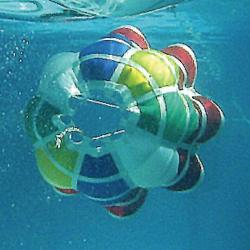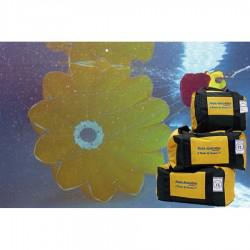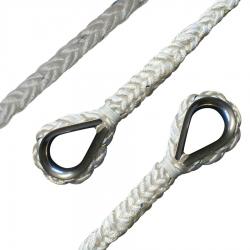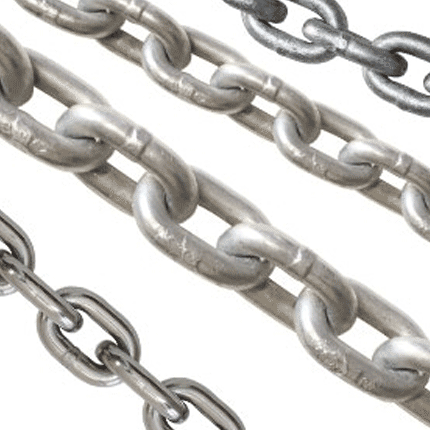Drogues and Para Anchors
Being prepared for adverse weather at sea is essential for all sailors whether you enjoy a day trip, channel hop or ocean passage. A day trip up the coast can be attempted knowing that most forecasting models are pretty accurate over 12 hours and we can plan with a safety refuge in mind. However, even the latest forecast models can change dramatically over 24 hours and are just a guide at 72 hours. This means longer trips and passages increase the possibility of encountering more challenging conditions.
With this in mind, offshore sailing and ocean passages require additional equipment over day trippers. Furling genoas, staysails and slab reefing can all be fitted and deployed to reduce the sail area presented to the breeze and allow the journey to progress when the breeze picks up and swell builds. In such conditions, the boat may develop some fairly unfriendly movement patterns, creating increasing levels of difficulty for all on board. Even the most enthusiastic of crew will eventually be tired out by the constant effort required to maintain control. Sea anchors and yacht drogues offer two different methods for helping to manage the situation.
Sea anchors, as the name suggests, offer a method for holding station in waters that are too deep for conventional anchors. ‘Flown’ from the bow, they allow a boat to take the conditions directly on the bow. Sea Anchors such as the Para Anchor are often called parachute anchors due to their similarity in design and function when compared to regular dome-shaped parachutes. The principle of a parachute is to slow an object moving through air by increasing drag. When applying the same principle to an object (boat) moving through water, the resultant drag created by a parachute is significantly greater per square metre of canvas. This means that sea anchors can provide very high levels of drag. So much so, that a correctly sized sea anchor can actually ‘tow’ a boat to weather if there is a knot or so of current underneath it.
A sea anchor set-up usually includes a long rode, weighted ballast or heavy swivel, ‘suspension lines’, the parachute itself and retrieval line. The resistive force produced by the set-up demands the anchor rode to be at least as strong as the bower anchor set-up, typically one size bigger than specified in our Anchor Warp Size Guide. The rode is typically around 100 metres long to provide maximum spring in the system and reduce shock loading on the sea anchor itself. The best line for this is an 8-plait Nylon such as LIROS Anchorplait or LIROS Octoplait White Nylon.
A sea anchor is only effective when completely submerged. A short length of chain or a big heavy swivel at the end of the rode helps prevent the para anchor breaching the surface. ‘Suspension lines’ and the parachute itself are quite heavy duty to handle the high loads. Consequently, the whole set-up can be quite heavy. For example, a 40’ monohull of average displacement would require a Bass Strait 18 Para anchor (17kg) plus 100m x 18mm nylon (30kg)
Drogues are designed to be towed from the stern whilst ‘running before’ the conditions. The idea is to slow the boat down and reduce the risk of broaching by keeping the stern pinned back. Drogues come in a variety of shapes and designs. The Jimmy Green Yacht Drogue features a simple heavy-duty PVC cone shape with exit hole while the Para Drogue features a ridged skirt and pilot cone. Both shapes are designed to catch water to create drag while allowing the drogue to travel through the water with stability. If the design porpoises or rotates, it’s more likely to break the surface and collapse. This will release the tension in the line and let the boat surge forward dangerously. The drag required to reduce the speed of a yacht is significantly reduced compared to a sea anchor, so the designs are smaller and more lightweight. Therefore, it is practical to introduce a weight to the bitter end of the rode to assist with weighting it down. A common set up would include a long rode, shackles and chain and drogue. A trip line can also be added although care must be taken not to let it get tangled with the main rode. The rode itself could be a size lighter than your bower anchor rode as specified in our Anchor Warp Size Guide.
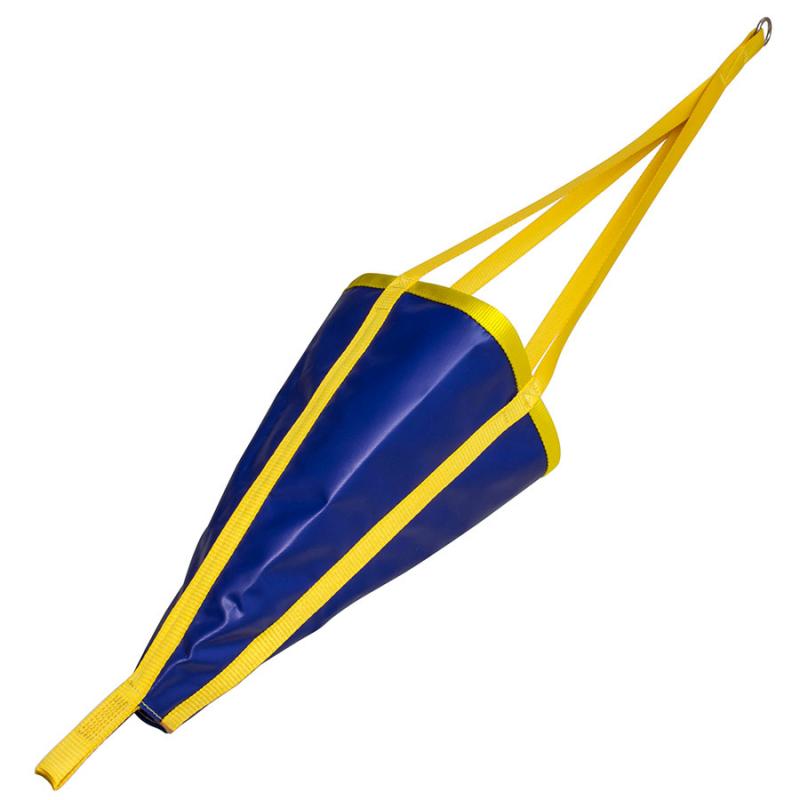
Jimmy Green Yacht Drogue
In summary, Sea anchors are excellent for holding station. A real advantage with a lee shore 50-100 Nm away. The main drawbacks include the overall weight of equipment to deploy and retrieve plus the fact that you will have to face the conditions head on. This will increase the frequency of the waves and wind across deck compared to a drogue.
A yacht drogue gives excellent control of the yacht. Running before the storm reduces the frequency of the waves and wind speed across deck. Carrying 2 or 3 different sizes gives you further control of your speed. However, it is not suitable for use with a lee shore that doesn’t have any safe havens.
Both solutions require practice in relatively controlled conditions. Learning how to efficiently deploy and retrieve such equipment can save valuable time and energy when you need it most.
Main Menu
Main Menu
Back
Main Menu
Back
Main Menu
Back
Back
Main Menu
Back
Main Menu
Back
Back
Main Menu
Back
Main Menu
Main Menu
Back
Main Menu
Back
Back
Back
Back
Back
Back
Back
Back















